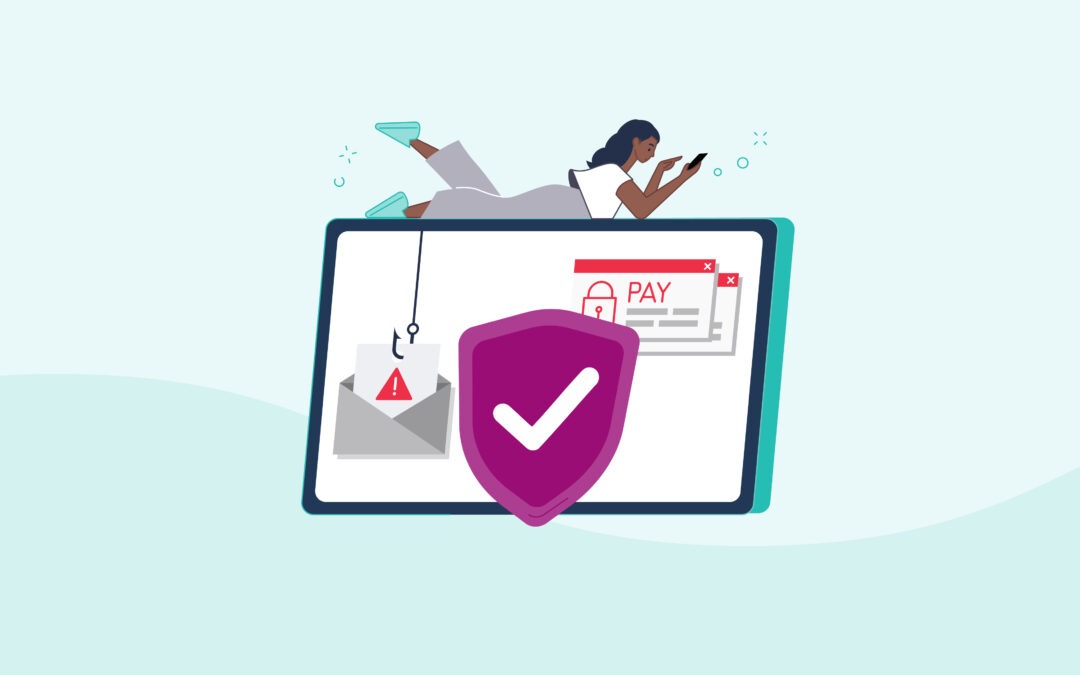When you go away on holiday, you don’t just shut the front door and leave – you secure all doors and windows, turn on any alarms or cameras, lock your gate and even ask a neighbour to keep an eye on the house while you’re away.
Setting up a safer, more secure network for your school or kura is similar. No single tool offers complete protection from online threats or inappropriate content. Instead, you need multiple layers of protection at different entry points to minimise the overall risk.
DNS Threat Protection is a crucial layer – here’s what you need to know:
Understanding DNS Threat Protection
DNS (Domain Name System) Threat Protection is one of N4L’s Internet Safety & Security Services that proactively blocks domains known to contain ransomware, malware, phishing scams, command and control attacks, VPNs, and other attacks that could put your network security at risk. The technology compares domain name information – data sent when a user types in a website name or clicks on a link – against a list of sites known for malicious content, then blocks or redirects if a site appears to be high-risk.
Blocking these sites helps protect your network in two ways. First, it stops malware entering your network and prevents ‘command and control’ attacks that can enter via DNS information. Secondly, blocking access to phishing sites means your users are less likely to come across a malicious link or accidentally share sensitive data with a scam website.
Getting your head around different types of protection
If you’re not a tech person, it can be hard to understand the different kinds of technology involved in network protection. Because DNS Threat Protection and Web Filtering both help to filter out harmful online content, it’s easy to confuse them. While both are crucial elements of a safer, more secure network, they’re actually quite different.
DNS is like a large phone directory (or a good old phonebook for those who remember them). Just like the phonebook had a phone number and address assigned to a person’s name, DNS turns the name of a website (like google.com or n4l.co.nz) into an internet address that computers understand. It’s a lot easier to remember google.com rather than the internet address of 142.251.46.174.
With DNS Threat Protection we can stop a bad request as soon as the name is looked up, and before the computer connects to the bad website. It works by blocking harmful websites using domain name information by comparing data signatures with known threats. The technology is proactive, continually scanning for harmful sites and updating its block list. While this protection can be used to help filter out explicit content, it’s generally focused on network threats and cyber attacks.
Web Filtering catches and blocks based on website categories and specific websites and apps, as well as URLs or domain names. It helps block inappropriate websites and apps that are harmful to your ākonga – like child abuse, violence, sexual and extremist content – and websites that could compromise your network – like phishing sites, malware and spam.
The key difference? DNS Threat Protection is a broad-brush function that blocks malicious sites without your input. Web Filtering is much more granular – it’s up to the leadership team at each school or kura to decide what to block to best suit the needs of their environment and students, whether it’s to block entire web categories, specific websites or apps, and unblock categories if you find them too restrictive. We then action these decisions for you via a request in MyN4L’s Web Filtering tool or directly to our Customer Support team.
Protecting your network with DNS and N4L
How do you set up effective DNS Threat Protection for your network? N4L can enable this for your school. It’s one of five key features in our Internet Safety & Security Services, designed to provide a baseline level of online protection for your network.
There is one caveat – if your school hasn’t yet received their Managed Network Upgrade and has N4L’s DNS Threat Protection enabled, ensure that it’s set to our DNS server, otherwise you won’t get the benefit of DNS protection.
Interested in diving deeper? Check out these additional resources for more in-depth technical insights:
Talk to our Customer Support team on 0800 532 764 or [email protected] if you’re not sure how to check or set this up – we’re here to help and want to make sure you’re getting the most out of your N4L services.
If you’d like to hear more from N4L, or see more blogs like this, why not subscribe?

